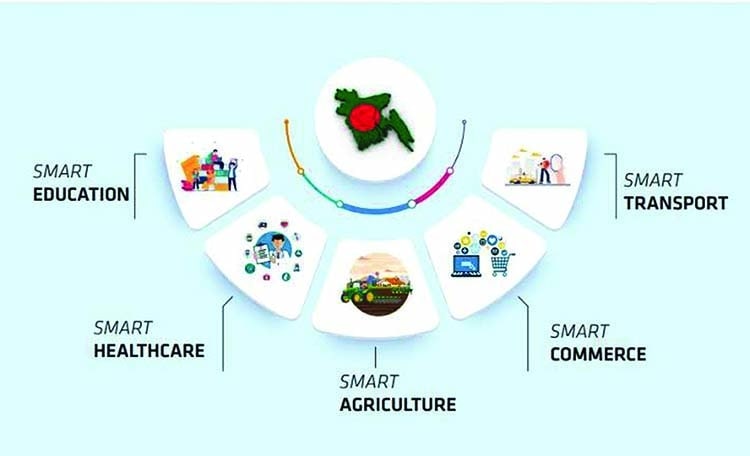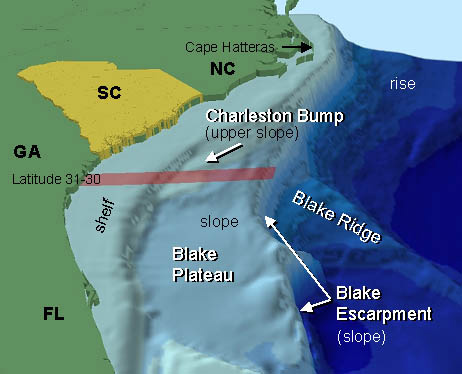The Earth is constantly changing, and the formation of continental shelves is one of the many processes that have shaped the planet over time. Continental shelves are areas of relatively shallow water surrounding continents, which have played an important role in the evolution of life on Earth and the geological history of the planet. In this article, we will explore in detail the formation of continental shelves, the processes that have led to their creation and their significance in understanding the Earth’s history.
Table of contents
Introduction: What are Continental Shelves?
Continental shelves are areas of relatively shallow water surrounding continents. These areas are characterized by a gently sloping seabed that extends from the shore to a depth of around 200 meters. Beyond the continental shelf lies the continental slope, which drops steeply to the abyssal plain, which covers most of the Earth’s seafloor.
The size and shape of continental shelves vary depending on the location and geologic history of the continent they surround. Some continental shelves are relatively narrow and steep, while others are broad and gently sloping. Some shelves are covered with sediment, while others are dominated by rocky outcrops.
Plate Tectonics and Continental Shelf Formation
The formation of continental shelves is closely tied to plate tectonics, the theory that the Earth’s crust is made up of several large plates that move around the surface of the planet. As the plates move, they can collide, pull apart, or slide past each other, creating a range of geological features, including mountains, volcanoes, and ocean basins.
One of the key ways that plate tectonics has influenced the formation of continental shelves is through the process of continental drift. Millions of years ago, the continents we know today were part of a single supercontinent called Pangaea. As Pangaea broke apart, the pieces moved away from each other, eventually settling into their current positions.
As the continents moved, they created new ocean basins between them. This process, known as seafloor spreading, also led to the formation of new continental shelves. As the plates moved apart, magma rose up from the Earth’s mantle to fill the space, creating new crustal material that eventually formed the continental shelves.
Sea Level Changes and Continental Shelf Formation
Another important factor in the formation of continental shelves is sea level changes. Over the course of Earth’s history, sea levels have risen and fallen as a result of a range of factors, including the formation and melting of glaciers, changes in ocean currents, and variations in the amount of carbon dioxide in the atmosphere.
During periods of low sea level, the continental shelves were exposed to the air, allowing sediments to accumulate and new habitats to form. As sea levels rose, the shelves were submerged, leading to the deposition of sediments in deeper water, which can ultimately form new continental shelves as sea levels fall.
Sedimentation and Continental Shelf Formation
Sedimentation is another key process in the formation of continental shelves. As rivers flow into the ocean, they carry sediment with them, which can accumulate on the continental shelf. Over time, this sediment can build up, forming new landmasses and contributing to the expansion of the continental shelf.
The type of sediment that accumulates on the continental shelf can vary depending on a range of factors, including the type of rock on the adjacent landmass, the strength and direction of ocean currents, and the presence of marine life. Sediments can be composed of a range of materials, including sand, silt, and clay, and can be transported by a range of processes, including currents, waves, and storms.
The Significance of Continental Shelves in Earth’s History
Continental shelves have played an important role in the evolution of life on Earth and the geological history of the planet. They provide habitats for a range of marine organisms, including fish, mollusks, and crustaceans, which in turn support larger predators such as whales, dolphins, and sharks. The sediments that accumulate on continental shelves can also provide a record of past environmental conditions, including changes in climate, sea level, and ocean circulation.
In addition, continental shelves can play an important role in the global carbon cycle. As sediments accumulate on the shelf, they can trap organic matter, which can then be buried and ultimately transformed into fossil fuels such as oil and gas. The carbon stored in these fossil fuels represents a significant reservoir of carbon that has been removed from the atmosphere over geological time scales.
Conclusion
The formation of continental shelves is a complex process that involves a range of geological, oceanographic, and biological factors. Plate tectonics, sea level changes, and sedimentation all contribute to the creation and evolution of continental shelves, which have played a significant role in the history of the Earth. By studying these processes and the sedimentary record on continental shelves, scientists can gain insights into the history of the planet and the evolution of life on Earth.
Bibliography
- Kennedy, M. (2019). Sedimentary Rocks: A Petrographic Atlas. John Wiley & Sons.
- Müller, R.D., Cannon, J., Qin, X., Watson, R.J., Gurnis, M., Williams, S., and Pfaffelmoser, T. (2018). Plate Tectonics and Continental Evolution. In Treatise on Geophysics, 2nd Edition, edited by G. Schubert, 7-56. Elsevier.
- Nesbitt, E.A., and Young, R.A. (1982). Early Proterozoic climates and plate motions inferred from major element chemistry of lutites. Nature, 299(5885), 715-717.
- Nield, T. (2018). Supercontinent: Ten Billion Years in the Life of Our Planet. Granta Books.
- Smith, A.G. (2013). The Use of Fossil Carbonate Platforms to Define Large-Scale Tectonic and eustatic Controls on Sea-Level Changes. Gondwana Research, 23(1), 4-20.
- Van Wagoner, J.C., and Posamentier, H.W. (1990). An Overview of the Fundamentals of Sequence Stratigraphy and Key Definitions. SEPM Special Publication, 42, 39-45.



 For all latest articles, follow on Google News
For all latest articles, follow on Google News